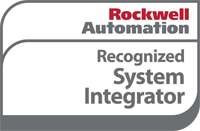In today’s world, computer control is one of the most effective solutions for improving reliability, gathering real-time data, and protecting a power system network. A reliable SCADA system can play a significant role in your operating system.
The term SCADA stands for Supervisory Control and Data Acquisition. A SCADA system has both hardware and software components. The SCADA examines, collects, and processes data in real-time from plant floor devices such as pumps, valves, and transmitters.
Data collected from the field devices is then passed to the processors such as PLCs.
From the processor, the data is distributed to a system of networked devices such as HMIs, computers or servers.
SCADA systems:
The structural design of a standard SCADA system begins with Remote Terminal Units (RTUs) and/or Programmable Logic Controllers (PLCs).
RTUs and PLCs are microprocessors that communicate and interact with field devices like valves, pumps, and HMIs.
That communication data is then routed from the processors to the SCADA computers, where the software interprets and displays the data. This gives operators the chance to analyze and react to events or things going on with the system.
Before SCADA, plant workers had to be on-site during production to monitor and control industrial processes with selector switches, pushbuttons, and dials for analog signals.
But as manufacturing and industrial plant sites grew in size and became more remote, relays and timers were used to help control and supervise processes so that fewer plant workers were required to be on-site to control operations.
However, while relays and timers helped with automation, the panels took up space, troubleshooting was difficult, and reconfiguring was complicated. This, along with the need for larger industrial plants helped lead to automation systems.
SCADA systems have evolved from telemetry and colossal machines in the 1960s and 1970s, to systems using modern IT standards like SQL and web-based applications, providing real-time plant information that can be accessed from anywhere around the world.
SCADA systems are mostly used in factories and industrial organizations to maintain efficiency and accelerate data distribution. This helps create a faster decision-making process and saves organizations time and money.
SCADA systems are used in both simple and complex installations and are often used in energy, manufacturing, recycling, power, oil and gas, and transportation industries.
Modern SCADA systems replace the manual labor needed to perform electrical distribution tasks and other processes in distribution systems with automated equipment. SCADA maximizes the efficiency of a power distribution system by providing things like a real-time view into the operations, data trending and logging, maintaining desired voltages, currents, and power factors, generating alarms, etc.
SCADA uses Intelligent Electronic Devices (or RTUs) to monitor, protect, and control equipment within a distribution system. It can restore power service and maintain the desired operating conditions at all times.
It improves the reliability of supply by reducing the duration of outages. Distribution SCADA can supervise an entire electrical distribution system and is categorized into three types:
In substation automation system, SCADA performs operations like bus voltage control, bus load balancing, circulating current control, overload control, transformer fault protection, bus fault protection, etc.
Feeder voltage control regulates voltage and performs capacitor placement operations while feeder switching deals with remote switching of various feeders, detection of faults, identifying fault location, isolating operation, and restoration of service.
End-user load control automation implements functions like remote load control, automatic meter reading and billing generation, etc. It provides energy consumption by consumers as well as energy meter tampering and theft. It can then disconnect remote service until the problem is resolved.
Not every SCADA system is greatly optimized. However, with the help of our automation specialists, RECCI offers the most advanced the latest technology solutions for PLC/HMI/SCADA configurations for new and retrofit applications.
We can help troubleshoot existing programs or designs or program a completely new system that will help save you both money and time.
Call us today for a free estimate.

246 Business Park Drive • Fairmont, WV • 304.363.5752 • Linked In
 WV049346
WV049346
SITE HANDCRAFTED BY The STICK Co.